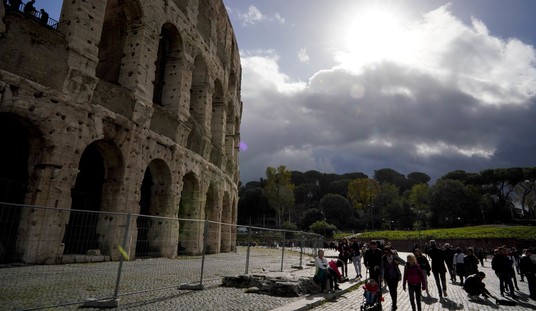Author’s Note: Interested readers can find all previous volumes of this series here.
Thanks for joining our Bible study. The headline teases a miraculous occurrence on the “road to Damascus” that changed the world. Later, the phrase was incorporated into our language. Here is the background.
A Jewish scholar named Saul was persecuting Jewish followers of Jesus Christ. But Jesus intervened (as only He can). He unleashed His heavenly power on Saul, who converted to believing that Jesus was Lord. Saul, who was renamed “Paul,” traveled extensively in the name of Jesus, enduring suffering, hardship, and martyrdom.
Paul’s prolific writings formed much of the New Testament. His impact on Christianity evolving into the world’s largest and most influential religion is unmatched (except by Christ himself).
Over time, Paul’s supernatural conversion took on greater significance with the “road to Damascus” morphing into a secular term referring to any transformative event or life-changing moment that facilitates a permanent course correction.
With that said, let’s turn to Acts 9:1-19 and learn (or refresh your knowledge) about all the details and lasting significance of this seminal event. I will paraphrase for space considerations.
Saul of Tarsus was a Pharisee, a select group of learned Jewish men. He studied under Gamaliel, the most revered teacher of Hebrew law. (See Vol. 58.)
Saul developed a zeal for persecuting Jews who believed that Jesus was the Jewish Messiah. He authorized and was present during the stoning of Stephen — the first martyr for Christ. (See Vol. 57.)
Recommended
Then Paul began a new mission to visit the “synagogues in Damascus, so that if he found any [worshippers] who belonged to the Way, [name for the early church] whether men or women, he might take them as prisoners to Jerusalem” (Acts 9:1-2).
What happens next on the “road to Damascus” is the basis for the secular phrase:
“As he neared Damascus on his journey, suddenly a light from heaven flashed around him. He fell to the ground and heard a voice say to him, ‘Saul, Saul, why do you persecute me?’ ‘Who are you, Lord?’ Saul asked. ‘I am Jesus, whom you are persecuting,’ he replied. ‘Now get up and go into the city, and you will be told what you must do’ ” (Acts 9: 3-6).
Saul’s fellow travelers did not see Jesus, only “heard the sound,” but Saul was suddenly blind. (The root of another secular phrase, “blinded by the light.”) His companions “led him by the hand into Damascus,” and for “three days he was blind, and did not eat or drink anything” (Acts 9: 8-9).
Meanwhile, “In Damascus, there was a disciple named Ananias.” In a vision, the Lord directed Ananias to a specific house to ‘ask for a man from Tarsus named Saul, for he is praying. In a vision he [Saul] has seen a man named Ananias come and place his hands on him to restore his sight’” (Acts 9:10-12).
That is what I call “vision to vision” Divine communication!
However, in Ananias’s vision, he questioned the Lord’s orders because of Saul’s violent reputation saying:
“‘I have heard many reports about this man and all the harm he has done to your holy people in Jerusalem. And he has come here with authority from the chief priests to arrest all who call on your name.’ But the Lord said to Ananias, ‘Go! This man is my chosen instrument to proclaim my name to the Gentiles and their kings and to the people of Israel. I will show him how much he must suffer for my name’”(Acts 9: 13-16).
What the Lord said to Ananias is of paramount importance to the enduring power of Christianity. To proclaim His name, Jesus selected Saul as His “chosen instrument” and “must suffer for my name.” Is that Jesus’s version of tough love?
Then Ananias’s vision is over, and the story continues in real-time:
“Ananias, as directed by Jesus found Saul and placed his hands on him saying, ‘Brother Saul, the Lord Jesus, who appeared to you on the road as you were coming here, has sent me so that you may see again and be filled with the Holy Spirit.’ Immediately, something like scales fell from Saul’s eyes, and he could see again. He got up and was baptized, and after taking some food, he regained his strength. Saul spent several days with the disciples in Damascus” (Acts 9:17-19).
Saul is not renamed Paul until four chapters later in Acts 13:9, where it reads, “Then Saul who was also called Paul..” The change occurred without any fanfare, and here are the prevailing reasons: Saul was entering the Gentile phase of his ministry, and as a Roman citizen, he switched to Paul — the Roman name for Saul.
After Acts 13:9, Saul is always referred to as Paul, who went on to write at least 13 of the 27 New Testament “books” (chapters). His writings are deeply embedded into our culture, hearts, minds, and souls. For example, imagine a wedding ceremony without someone reading, “Love is patient, love is kind…” (1-Corinthians 13:4-8).
So what are you supposed to take away from this famous conversion story?
First, Saul struck down on the road to Damascus is an extreme but glorious example of submission and obedience to the power of Jesus. Pray about how you can glorify the Lord in your life through submission and obedience to Him.
Second, Paul’s conversion is also about forgiveness of sin. Although Saul was a murderer – most prominently of Stephen – Jesus forgave him so He could use Saul as his “chosen instrument.” But Jesus also famously said, “I will show him how much he must suffer for my name” – confirming consequences for our sin.
Finally, if you are not a believer in Jesus, what is holding you back? If you feel “called,” consider that a blessing and a positive sign not to be ignored. Personally speaking, as someone who was born Jewish, but at age 20 converted to Christianity – if He wants you to serve His earthy kingdom, He will give you signs and make his presence known. There is no need for you to be “blinded by the light.” See the light! Jesus told us, “I am the light of the world. Whoever follows me will not walk in darkness but will have the light of life” (John 8:12).
Amen!
Myra Kahn Adams is a media producer and conservative political and religious writer with numerous national credits. She is also Executive Director of www.SignFromGod.org, a ministry dedicated to educating people about the Shroud of Turin. Contact: MyraAdams01@gmail.com or Twitter @MyraKAdams.
























Join the conversation as a VIP Member